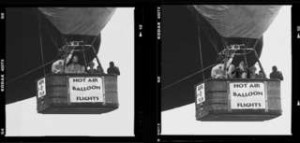“I don’t know what screwed up in my mind that caused me to conflate one aircraft from the other,” said by Brian Williams, a 55-year-old veteran.
He has told people a story about how his helicopter was hit by a rocket-propelled grenade when covering the war in Iraq. However, the fact is that the helicopter he was in was not the one got hit. Also, when the strike happened, his helicopter was an hour away from the strike location. His experience shows a part of the unreliability of human memory.
Elizabeth Loftus, a professor the at the University of California who experted in human memory, calls William’s story a “teaching mement,” which is a typical example of false memory. According to her, false memory happens when a person “remembers” something happened that actually did not. There are many experiments show the effect of false memory, and one of them is made by Wade, Garry, Read, and Lindsay. In 2002, they digitized a group of people’s childhood pictures and modified the picture to appear that the participants was taking a hot air ballon ride when they was a child(Pennsylvania State University, Lesson 9, pp9). The result showed that over fifty percent of participants believed that they had taken a hot air ballon ride when they was a child just by being showed doctored photographic “evidence” (Hogenboom, 2013).
Kimberley Wade, one of the creator of the ballon ride experiment, explained that the reason our memories are such melleable is because there is too much information to take in. What happens when a false memory is built is that the perceptual system cannot notice everything in the environment, so there would be gaps when the information is taken through senses.
“So when we remember an event, what our memory ultimately does is fills in those gaps by thinking about what we know about the world,” illustrated by Wade (Hogenboom, 2013).
Although the existence of false memory questions the reliability of our memory, some researchers believe that the errors made by human brain could help people as well.
Sergio Della Sala, a cognitive neuroscientist at the University of Edinburgh, UK, believes that the errors in memory could help people be away from danger. He presented an instance that if a person walks in a jungle and sees some grass moving, he would likely be panic and run away, assuming that there would be a tiger lurking. In contrast, in the view of a computer, the grass moving would be believed to be simply the wind in 99 percent of the time. In that case, if a person thinks like a computer, he might be eaten if there is truely a tiger.

Retrieved from http://www.imgneed.com/image/white-tiger-in-jungle-wallpaper/tiger-white-tiger-jungle-water
According to Della Sala, the brain would make 99 errors to save people from the tiger. Unlike a computer, the brain works with irrational assumptions. It’s prone to errors and it needs shortcuts.
In addition, Della sala also belives that the fact that brain would make false memory is a sigh that the brain is healthy.
“They are a by-product of a memory system that works well. You can make inferences very fast.”
References
Hogenboom, M. (2013). Why does the human brain create false memories?. BBC News. Retrieved from: http://www.bbc.com/news/science-environment-24286258
Firger, J. (2015). Brian Williams and the false memory phenomenon. CBS News. Retrieved from: http://www.cbsnews.com/news/brian-williams-and-the-false-memory-phenomenon/
The Pennsylvania State University. (2015). False Memories. Lesson 9: Everyday Memory and Memory Errors . PSYCH256: Introduction to Cognitive Psychology. pp9. Retrieved from: https://courses.worldcampus.psu.edu/fa15/psych256/001/content/10_lesson/09_page.html




